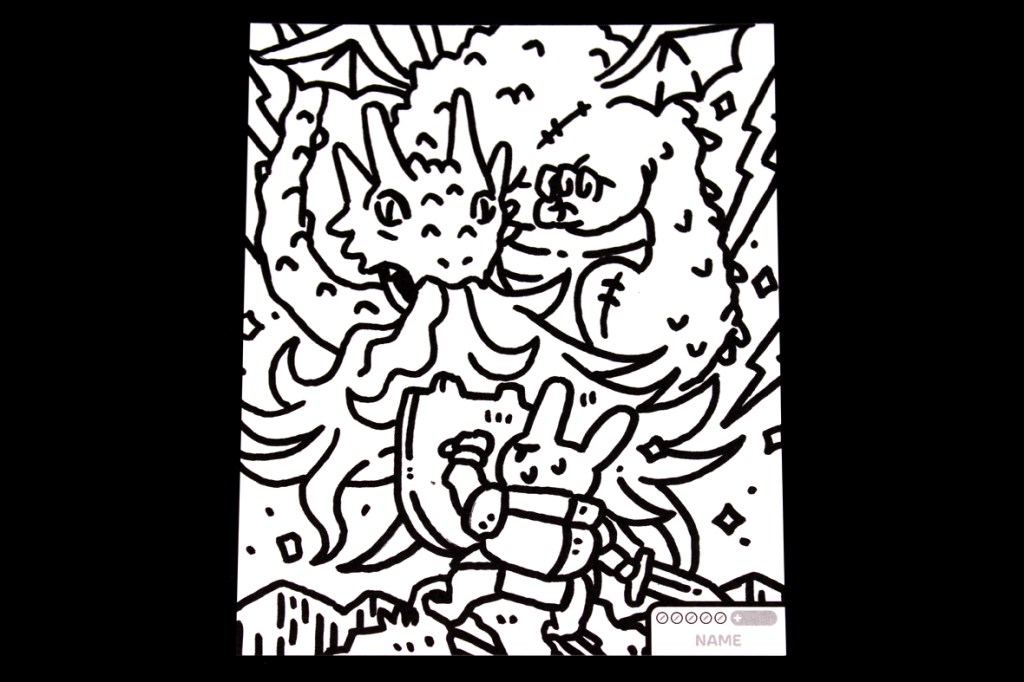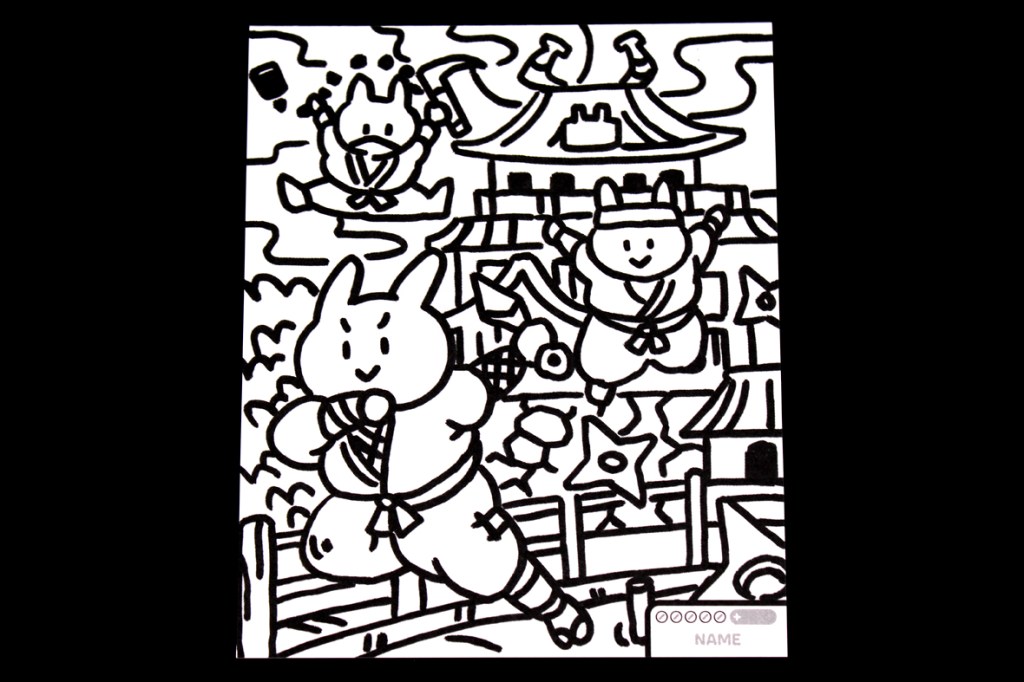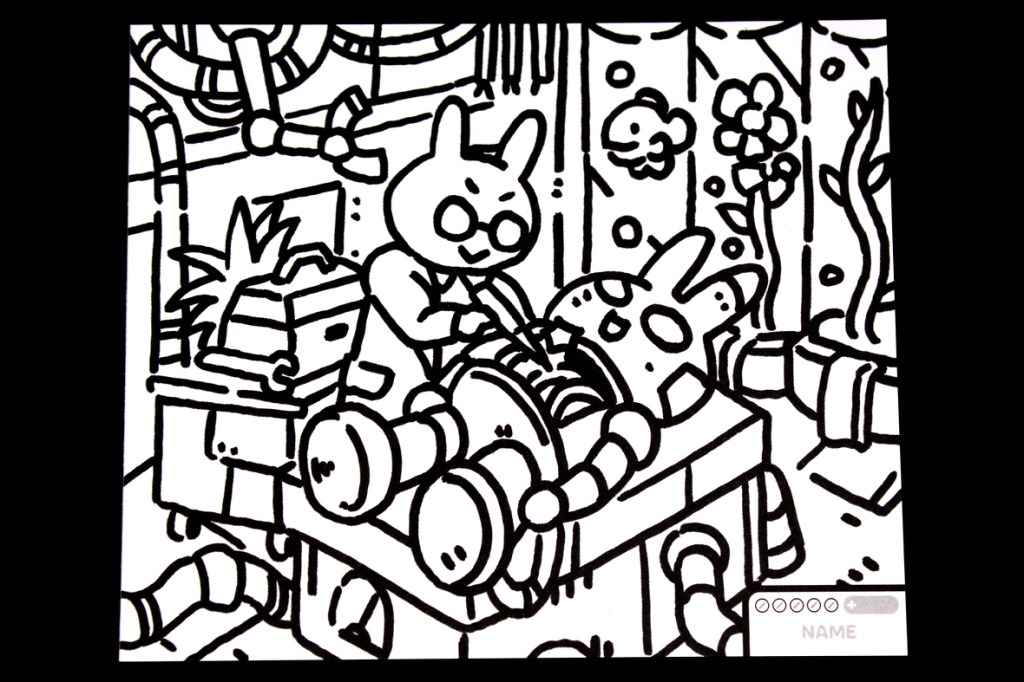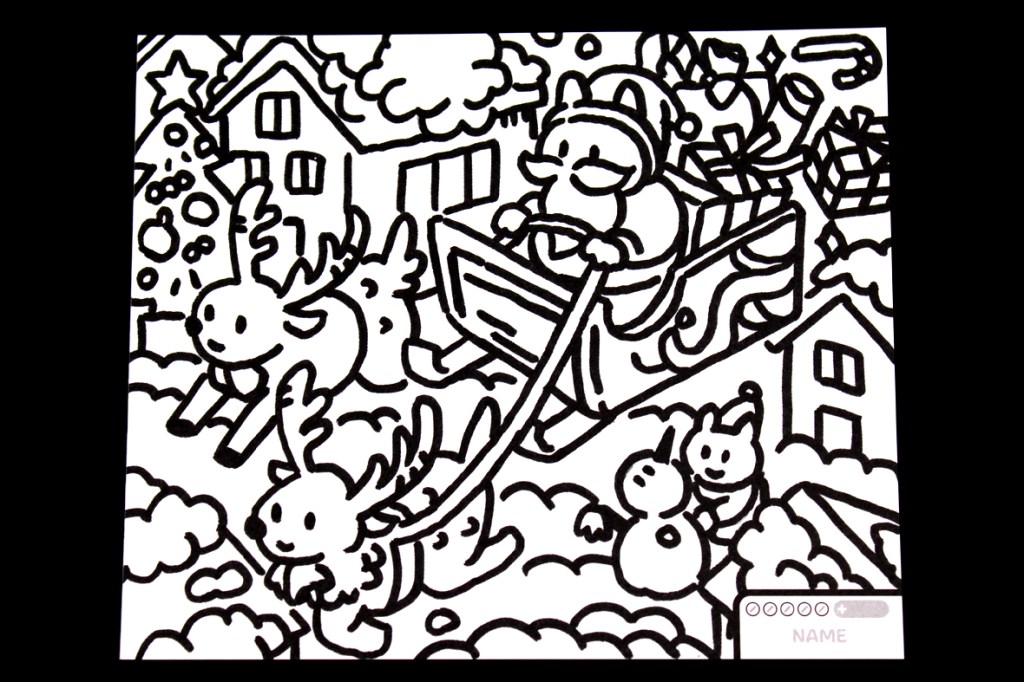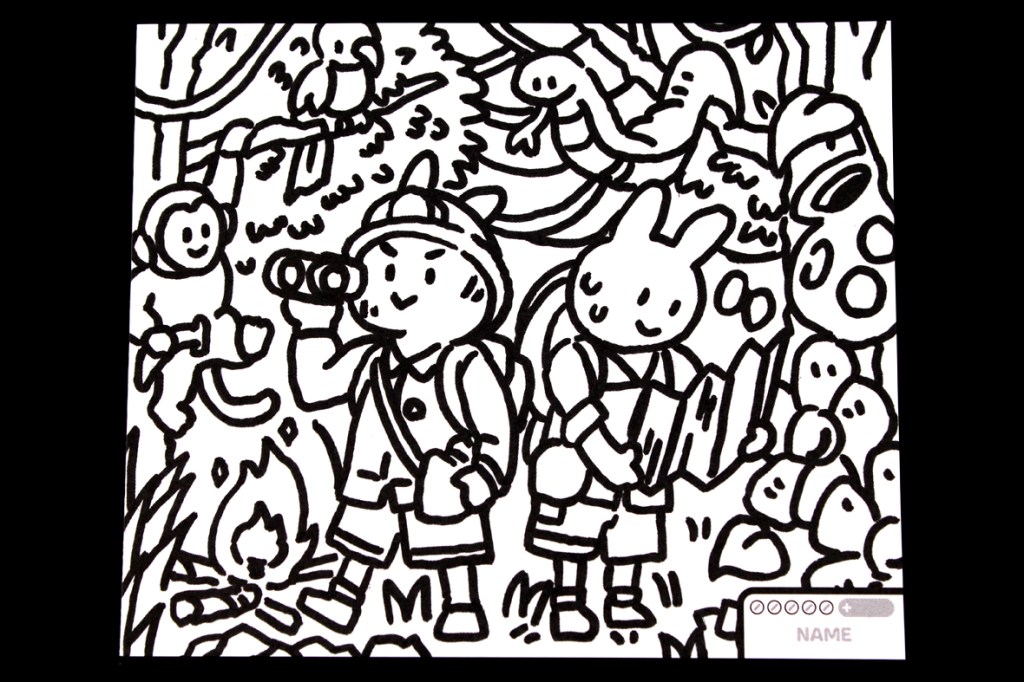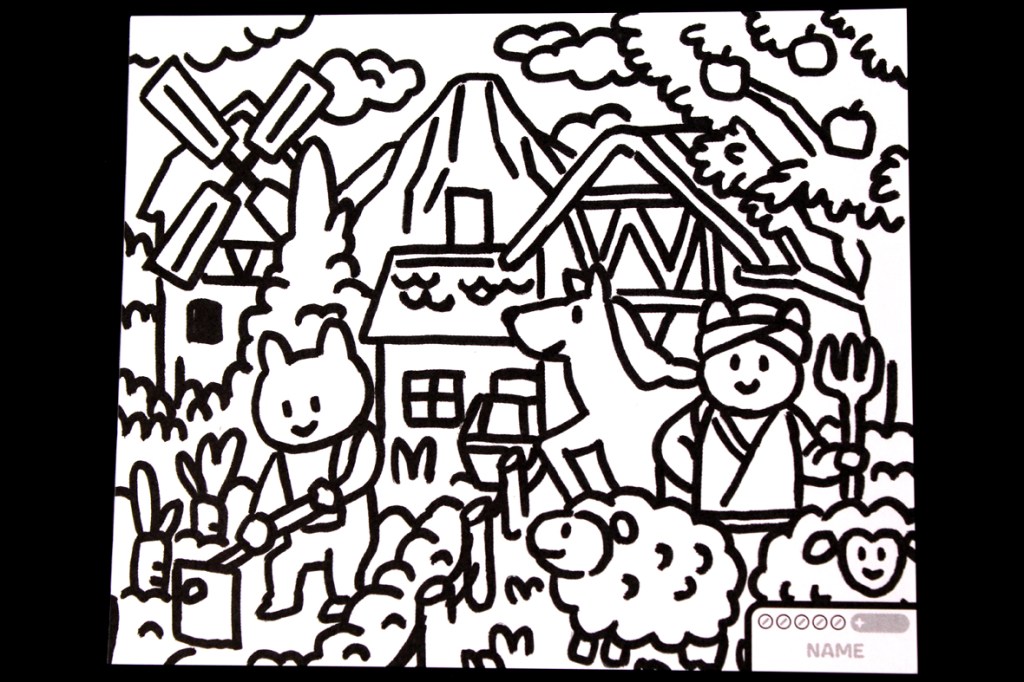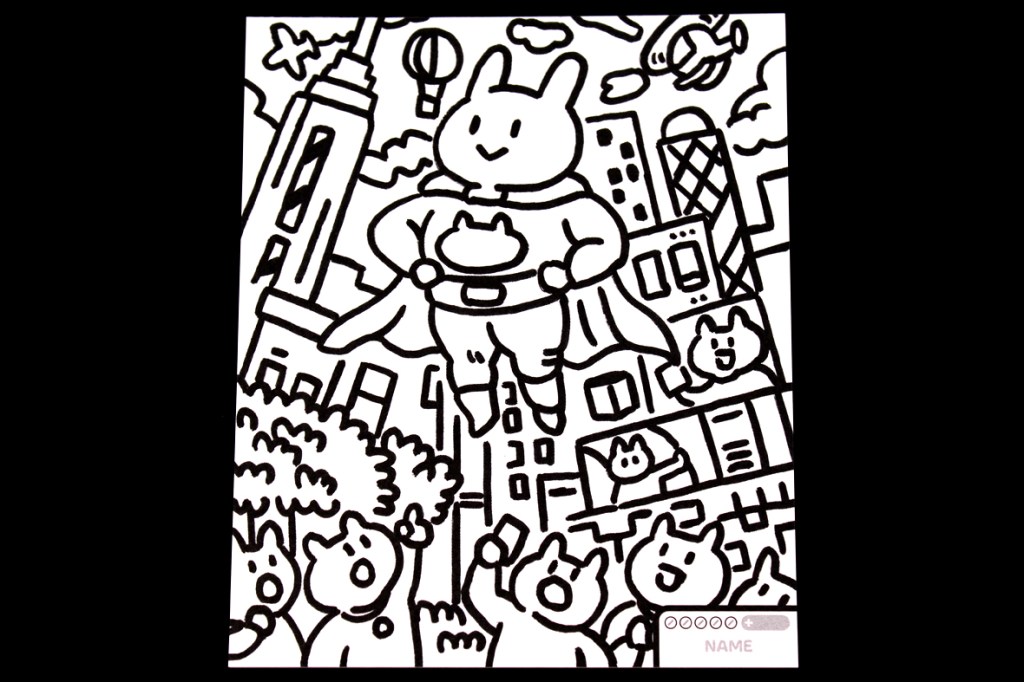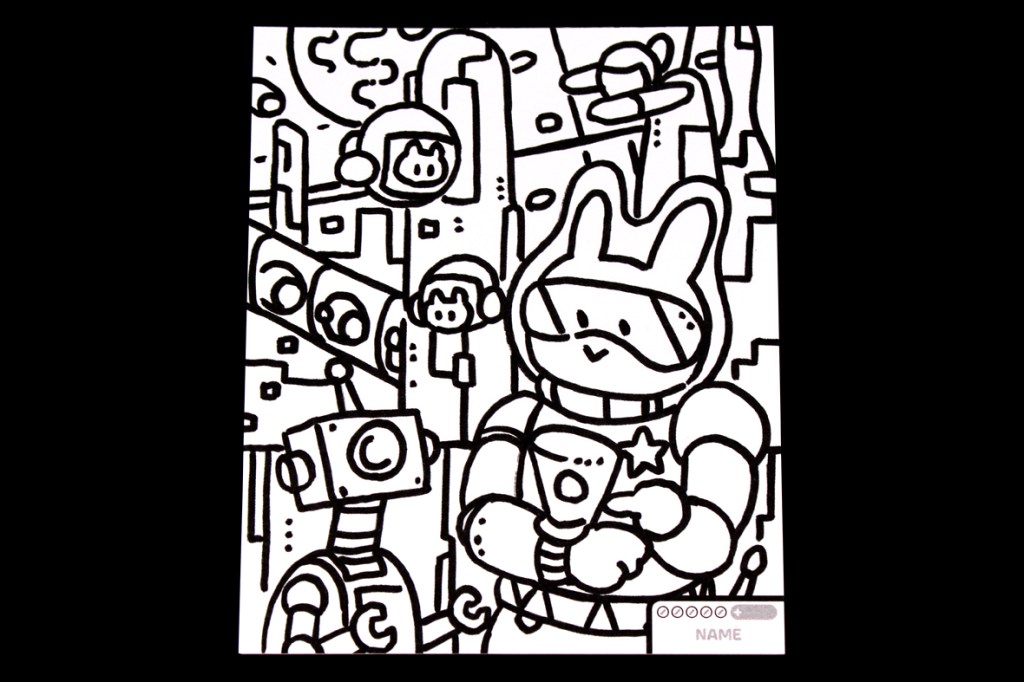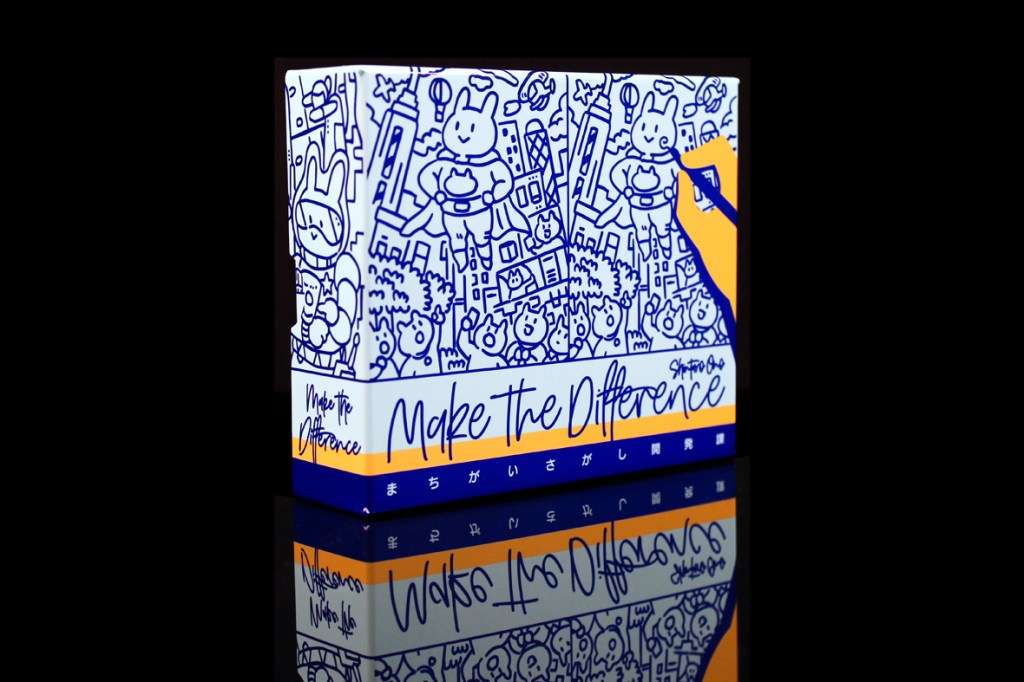
Base price: $45.
2 – 5 players.
Play time: 15 – 30 minutes.
BGG | Board Game Atlas
Buy directly!
Logged plays: 2
It’s been a hot minute since I’ve had a chance to try out any Oink Games titles. I’ve been meaning to, but the only ones left are a few higher player count games and Pokemon Nine Tiles, which I definitely should try playing a bit more. I’ve been looking forward to this game in particular, though! It’s one I was very excited about picking up at PAX Unplugged, and I’ve been able to play it a few times since then. I’m a huge fan of Oink’s entire deal, so looking forward to trying it. Let’s dive right in, and check out Make the Difference!
In Make the Difference, players are trying to make modifications to some drawings, primarily so that their opponents don’t notice them! The bigger the change, the more points it’s worth! But keep in mind, the bigger the change, the more obvious the change, as well. Will you be able to make your own modifications undetected?
Contents
Setup
Not a ton. Set the timer in the center, and place the score chips nearby:

You can set the boldness checker nearby, as well, along with the clear board:

Each player gets a pen and picks one illustration!

They’re a lot of fun. Here’s a closer look:
Pick one and write your name on it. Keep the pad nearby; you’ll need it later. You should be ready to start!
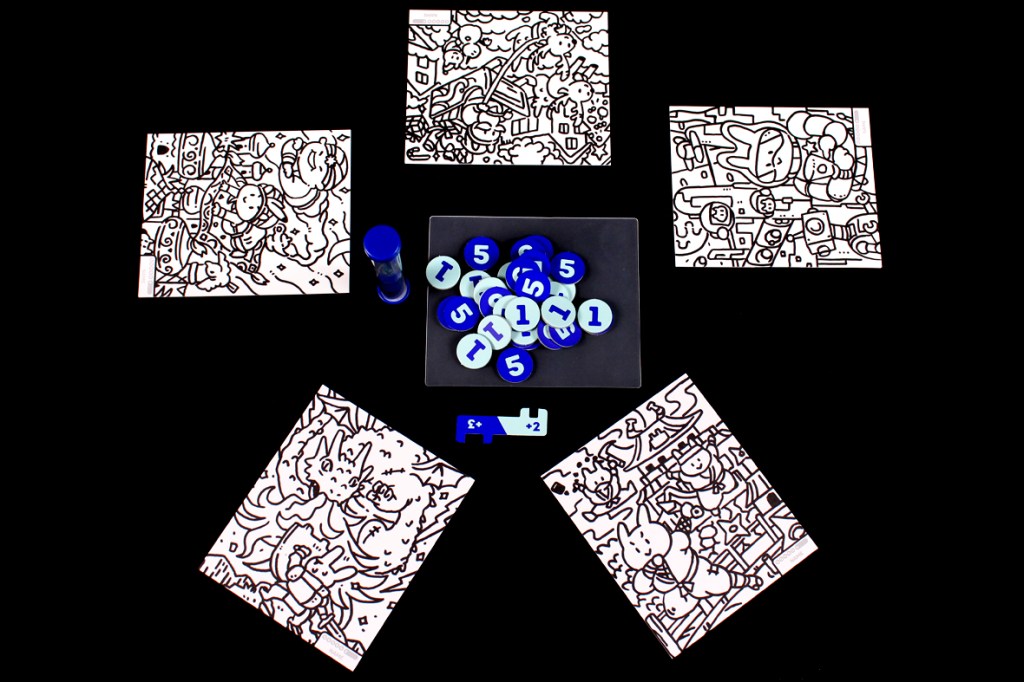
Gameplay
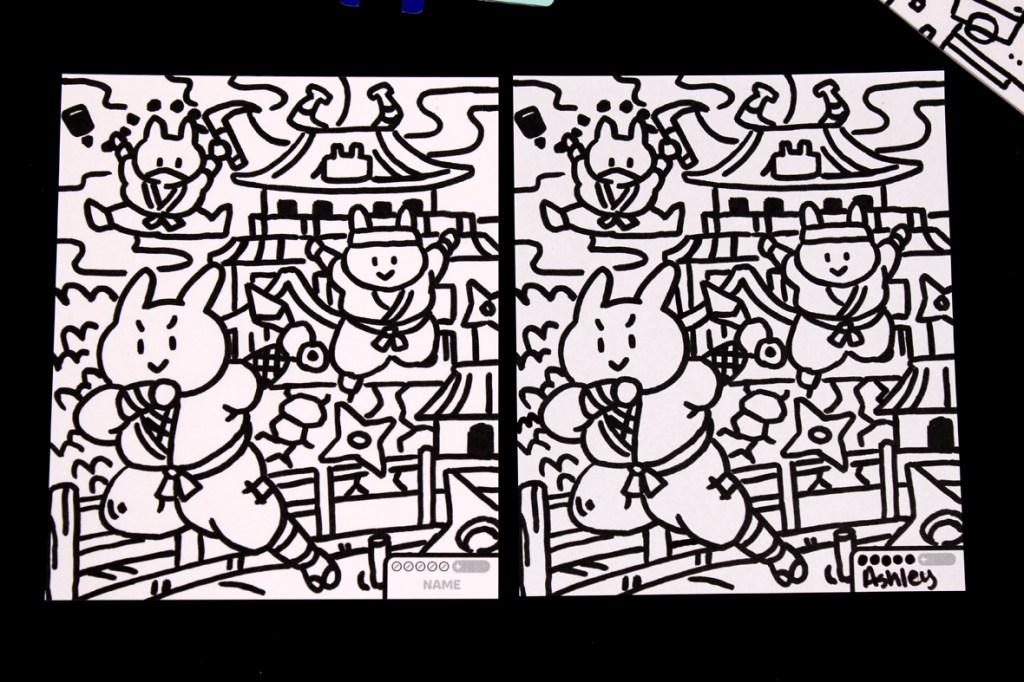
Make the Difference is all about minor alterations! You want to make some big changes that go unnoticed. After a while, you’ll have the other players try to spot your differences and you’ll try to spot theirs! Good luck.
Each player simultaneously makes five distinct marks on their sheet (the one with your name on it). There are a few rules:
- NO: Thickening or tracing an existing line. That’s unfair.
- NO: Making a difference that consists of more than one line. You’re allowed one line.
- YES: Making a difference that extends an existing line.
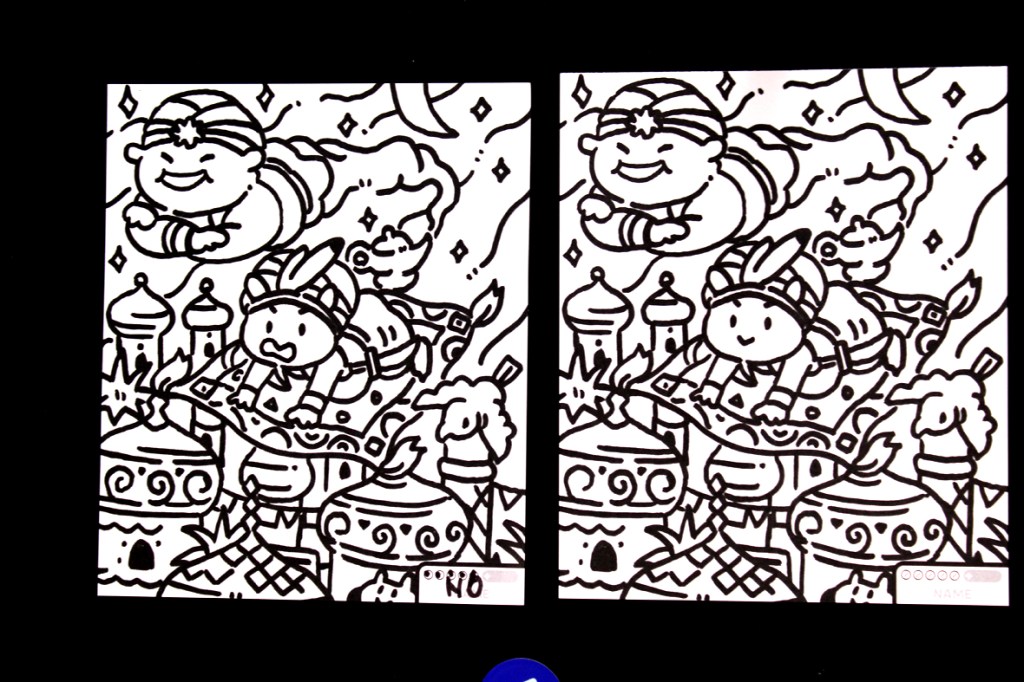
Once everyone’s made their five changes, choose a start player! Everyone will get a turn. The start player places the clear board on top of their sheet and places it next to the unaltered sheet. Flip the timer, and all players simultaneously try to point out the five differences! If any player makes two mistakes (pointing out something that wasn’t altered), they cannot point out any changes. If a player points out a difference, they get a point chip.
After the timer runs out, flip it and keep going! The difference is, now if a player successfully points out a difference, they get a point chip and the start player gets one, too! When this timer runs out, the round ends.
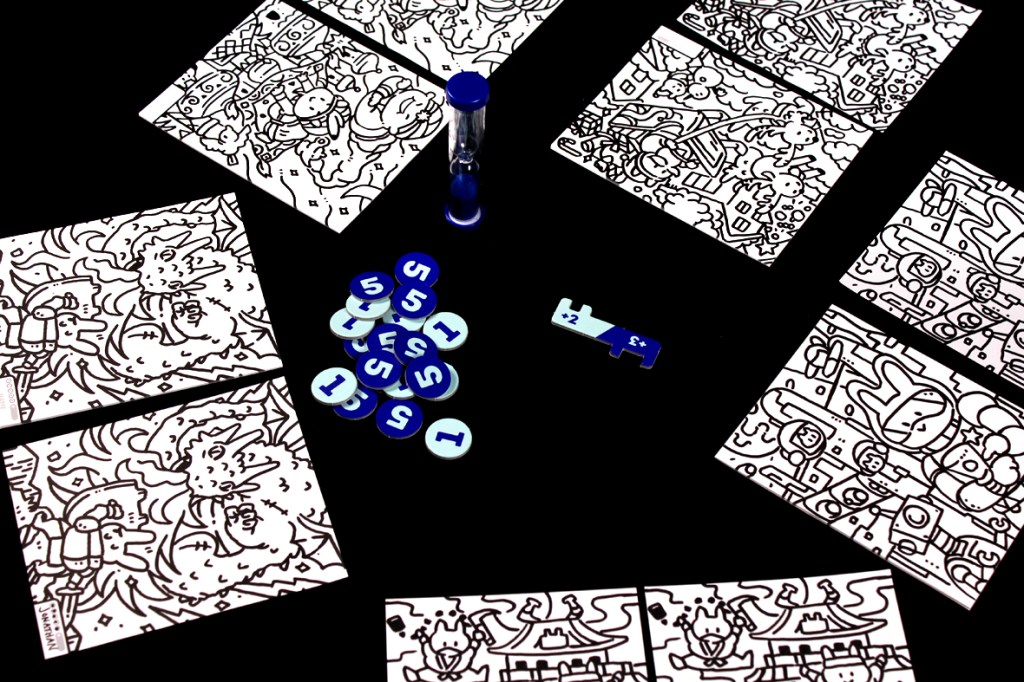
If any differences remain, the start player may get bonus points! Use the boldness checker to evaluate! Anything bigger than the +2 but smaller than the +3 earns 2 points points; anything bigger than the +3 earns 3 bonus points, and anything smaller than the +2 earns nothing! Now the player to their left is the new start player. Continue until every player has been the start player; then, the player with the most points wins!
Player Count Differences

Generally speaking, the game shifts a bit as player count shifts. There are more players, so your personal odds of holding down differences until the second half of the turn are a little worse, as a result. More players doesn’t particularly impact your drawing, however. You won’t notice any major changes there. At two, you’re really just going head-to-head, so if you can’t find the difference, it’s not getting found. With five, you might have one player who’s just much faster than you are, so you might have to skim a bit and make some hasty guesses if you want to get points at all. That can still happen at lower player counts, as well, but, you know, more players, more options. Beyond that, I don’t have any major player count preference; I think Make the Difference is fun at low and high player counts.
Strategy

- There are a lot of places where you can add a line to pretty easily fill in or extend something. There are a few that are just naturally part of the image, both to give players something to work off of and to obfuscate other extensions or changes. Look for those spots, if you’re struggling with finding something that works for you.
- Sometimes you might as well go for a big difference both to score bonus points and because someone might genuinely miss it. You miss one hundred percent of the shots you don’t take, right? Just don’t, you know, draw a big line straight across the art. Like, half an inch will get you +3 points pretty easily, so figure out places where you can sneak them in.
- Subtle differences aren’t worth bonus points, but they’re harder to spot. It’s generally worth getting the bonus points, though, so try for at least a +2. I know this is going to be groundbreaking, but points are good. If you want to make a larger difference, you might want to try and hide it somewhere so that another player doesn’t see it until it actually earns you some points.
- Don’t make your differences too small and subtle; if nobody finds them in the second half and they’re too small, you get no points! If you make tiny edits, they’ll just be worth nothing, so you won’t get anything from the bonus points. There’s not a lot of benefits to making the differences super small.
- There’s not really much in the way of “strategy” when it comes to spotting another player’s differences. It’s a skill; you just have to work at it, to some degree. Just try to scan from a high level and see if any parts of the image jump out at you as changed, to some degree. In lieu of that, try to scan in an orderly fashion? I’m not really sure, to be honest; this is something I struggle with when I pla.
- Don’t be too hasty! If you incorrectly claim two differences, you’re done for the round. There’s some energy when players are all collectively looking for differences, granted, but don’t let other players bait you into just grabbing after a difference if you’re not legitimately sure that it is one. You get one free mistake. If you’re thinking there’s a difference, it might be worth verifying first.
- It’s not that bad if you take some time to find the differences; the original player just gets points as well. There’s no penalty to running out of time during the first flip of the timer; you just get to go again and now the drawer gets a point for each difference you find. The one thing you need to watch out for is the other players.
Pros, Mehs, and Cons
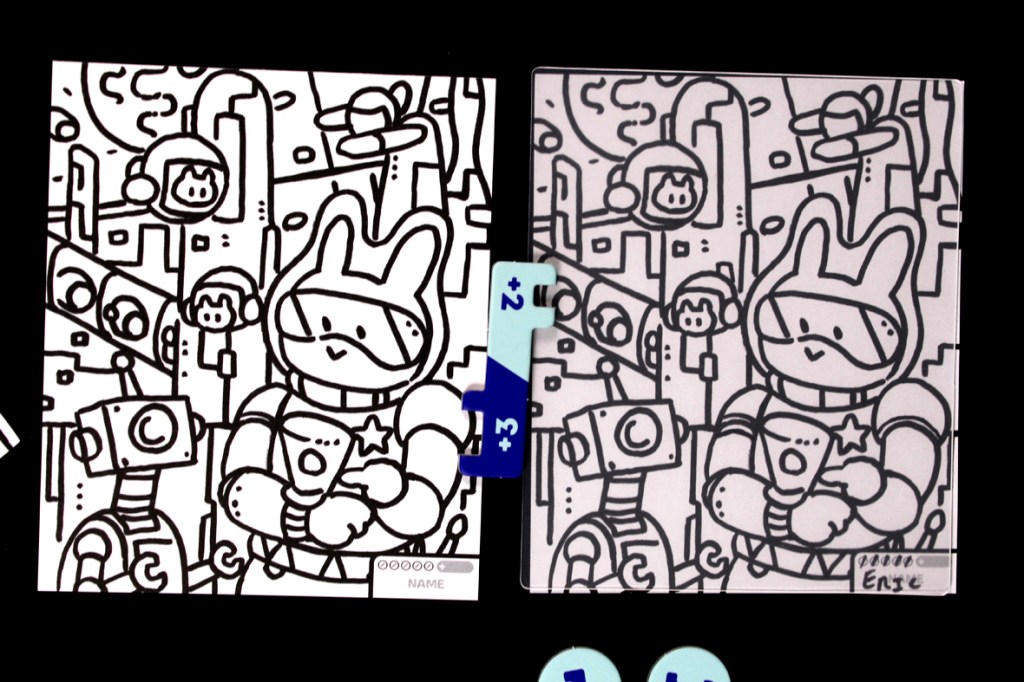
Pros
- Really love the art style for this game. It’s fantastic! There’s a distinct joy and pleasantness to every piece, which is lovely.
- I also like how many different drawings there are! They cover a wide variety of different genres and time periods and locales. Ostensibly, there should be enough that everyone can get something they like, but there may be some debates over a few of the particularly popular ones. That said, I have no real idea which the “popular” drawings are, so your guess is as good as mine, on that front.
- Obfuscating the modified art with that translucent overlay is a great idea; it makes it a lot harder to figure out what the differences are. I like that! It does a bit to help make things like tiny wiggles and imperfections a little harder to notice. It also helps a bit in that it makes the “new” lines a bit harder to detect since they’re a bit noticeable otherwise.
- I like how the differences are scored as well. The extra touch of the second phase is particularly brilliant. I love that both the finder and the drawer earn a point when it’s found, because you kind of got them. You didn’t perfectly nail it, but you goofed them a little. I also enjoy that the size of the not-found differences gives you more (or fewer!) points. It’s a well-designed scoring system.
- Plays pretty quickly, too. Once you start moving between start players, it wraps up pretty quickly.
- As with the classic Oink Games, this is pretty transportable. It’s a 2x box, so it’s twice as wide as a standard Oink Games box, but that’s still fine. I need to come up with another new storage solution for the Oinks; that will be a fun one to come up with later, I think.
- Already got an expansion with more, distinct drawings! I appreciate that they had enough to put into another box. I was also relieved that they didn’t try to overstuff the standard box with too many art pieces; then you’d also have to deal with players having anxiety about which drawing they want to take.
Mehs
- There’s definitely a skill-based component to spotting the differences, so that skill gap will likely become apparent during the game. I assume you just have to practice looking at the differences over and over until you get a good sense of what the changes are. You’ll get faster over time, but if another player is already “good” at it, they tend to move pretty fast.
- I kind of wish this accommodated more players. It really seems like the kind of game that would have been an 8-player party game, but I imagine that there’s some sweet spot about too many players and identifying differences too quickly and things like that.
Cons
- The game’s almost too cute? I almost never want to use any of the sheets because I’m afraid I’ll run out. I don’t think they sell anything in the way of a refill pack, and the challenge with a lot of games is that once they go out of stock, they might not get anything in the way of a refill pack ever again. I really enjoyed ClipCut Parks, for instance, but it’s now out of stock and the refill pack is nowhere to be seen. This is the kind of thing I get stressed about, so I end up not playing the game as much as I want to because I want to conserve the papers for “special occasions”. Not that it’s relevant, but I have the same anxiety about using stickers. This might just be my pathology, but oh well.
Overall: 9 / 10

Overall, I love Make the Difference! I just get a bit sensitive about it, because there are only 10 sheets of each type, and all the illustrations are so good. I want to use all of them, forever, and I’m going to have to see if I can make copies of them or something? I need to figure that out later. But Make the Difference speaks to the core of what makes an Oink Games title a classic. It’s quick to learn, easy to play, highly portable, extremely cute, and fun. It’s just a solidly fun game. I love trying to figure out where I can stash big changes on the paper to try and see if I can trick my opponents into taking them for granted. I love trying to find all the changes my opponents have made, even if I’m not always the fastest person to get there. And I love that the art pieces in general give you a lot of different opportunities for figuring out where you can hide a line or two. The art style in particular is fun and cartoony, but there’s also a pleasant amount of variety? There’s usually something in there for everyone. If not, I mean, they might want to examine their priorities, but there’s also an expansion that adds even more different art pieces. More on that another time. It can be a bit frustrating on the player side, granted, if another player is just significantly more skilled at catching and pointing out the differences than you are. There’s not much for that; this is a game with a nontrivial skill component. But they can make up for some lost points on their own drawings if they’re sneaky; I particularly like that the bigger unnoticed changes score the most points. It incentivizes players to go for it, even when that’s unwise. Make the Difference is a solid, quick game, though I do wish there were a way to support more than five players. The game’s got serious party game vibes, but it only supports up to five. Alas. Just means I get to have a great time with a maximum of four other people. If you enjoy a bit of drawing and subterfuge, you like games with engaging art, or you just enjoy spot the difference puzzles, you’ll likely enjoy Make the Difference! I think it’s a blast.
If you enjoyed this review and would like to support What’s Eric Playing? in the future, please check out my Patreon. Thanks for reading!

